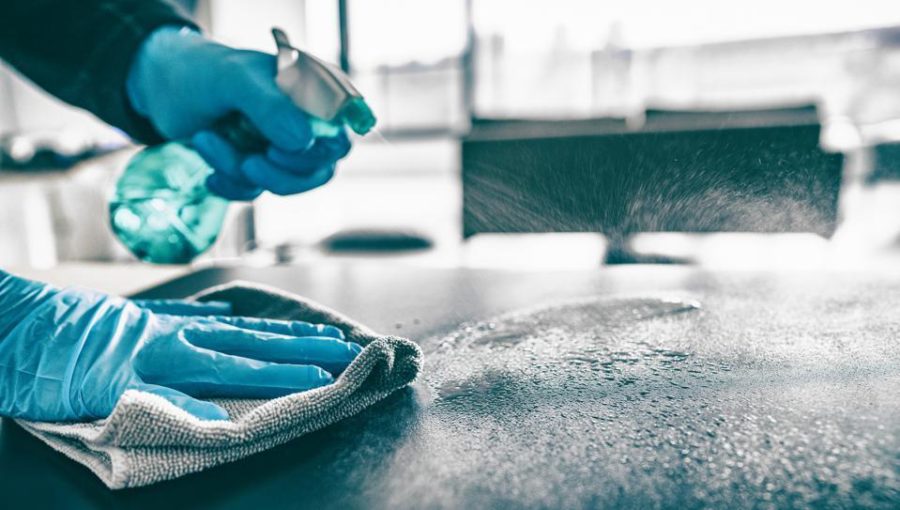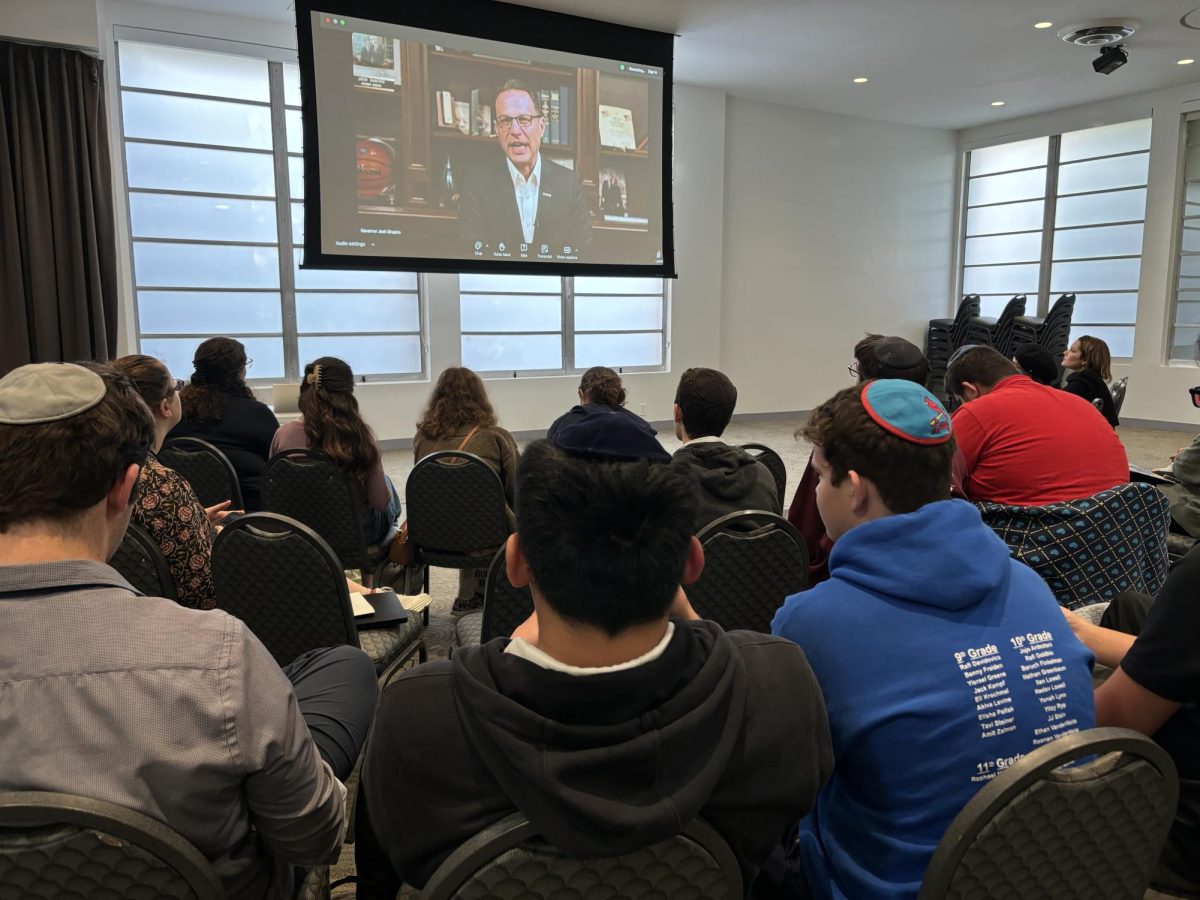Although bells don’t ring after classes this year in AJA High School, students still watch the clock diligently to remind teachers when class concludes. Students pack up their supplies and get ready to leave for their next class — but per AJA COVID-19 guidelines, they must wait to spray their surroundings with disinfectant and wipe down the desks and chairs. Throughout the day, members of the custodial staff make rounds in the building, spraying and wiping door handles, light switches, and other surfaces.
According to Chief Operating Officer Helen Haney, AJA spends around $2,600 on building supplies each month, and “a large bulk of that is the disinfectant and other various cleaning supplies.” In past years, AJA spent about $2,000 per month on these supplies, Mrs. Haney said, so cleaning costs are up about 30%. In addition, employs two facilities staff members who Mrs. Haney called “our COVID cleaners.” Their main responsibilities are cleaning restrooms and wiping down various surfaces, and otherwise making “continual rounds.”
In March 2020, when not much was known about the novel virus, recommendations often included disinfecting surfaces, including groceries or packages, because of fear of fomite transmission. (A fomite is a non-living surface from which one can pick up infectious disease.) However, in the intervening year, with real-life data and further studies, it has become increasingly clear COVID-19 mainly spreads through aerosol droplets, not from surface to surface.
Reflecting new studies and background knowledge about similar viruses, the Centers for Disease Control (CDC) updated its guidance on May 22, 2020, to acknowledge that although “it may be possible that a person can get COVID-19 by touching a surface or object that has the virus on it and then touching their own mouth, nose, or possibly their eyes… this isn’t thought to be the main way the virus spreads.” The CDC’s “How COVID-19 Spreads” page currently (as of publication) reads: “Spread from touching surfaces is not thought to be a common way that COVID-19 spreads.”
In July, Emanuel Goldman, a professor of microbiology at the Rutgers New Jersey Medical School, wrote in an essay for the medical journal The Lancet that the lengths to which people go to disinfect surfaces is “not justified by the data.” He disputed the studies that went viral (no pun intended) in March claiming that viral particles can last for hours on surfaces, arguing that the situations tested “have little resemblance to real-life scenarios” due to unnatural concentrations of viral particles and other real-world factors. As quoted in The Atlantic, Dr. Goldman said, “Surface transmission of COVID-19 is not justified at all by the science.”
Furthermore, real-world studies support this conclusion. A study from a hospital in Italy concluded, “These data would support Goldman’s point that the chance of transmission through inanimate surfaces is less frequent than hitherto recognised.” Similarly, of swabs taken from the surfaces of a quarantine hospital in Israel, none of the viral particles found were still infectious, which “might suggest low feasibility for indirect fomite transmission.”
With this in mind, why does AJA continue to insist on wiping down desks, light switches, and door knobs?
AJA Medical Committee member Dr. Amy Wolkin, an epidemiologist at the CDC, explained, “We can’t rule out fomite transmission. While there is limited evidence of transmission through fomites, it is still considered a possible mode of transmission.” She said, “Routinely cleaning surfaces… is a best practice and can reduce the role that fomites might play in the transmission of COVID-19.”
While COVID-19 fomite spread is “possible,” according to the CDC, it remains unlikely. The science journal Nature notes that of the “hundreds of studies” about COVID-19 transmission, only one of them shows evidence of fomite transmission. In that case, a person with COVID-19 blew their nose in their hand and touched an elevator button; soon after, another person touched that button and then immediately flossed with a toothpick.
As evidenced by this exceedingly rare occurrence, any potential fomite transmission requires a degree of immediacy and a high concentration of viral particles. Dr. Goldman, the Rutgers microbiologist, said, “If surface transmission happened, it would have to require touching a newly contaminated surface, then very quickly touching your eyes, nose, or mouth without washing your hands first.” In a school setting that requires masks, like AJA, this already far-fetched happenstance of immediacy seems even less likely.
Any decision requires tradeoffs, maximizing benefit while minimizing risk. In an effort to stomp out any already-minuscule possibility of fomite transmission, the school has paid for disinfectant, employed additional facilities staff members, and mandated desk-wiping for students. AJA and its Medical Committee has determined this tradeoff is worth it for now.
This story was originally published on March 5, 2021.












